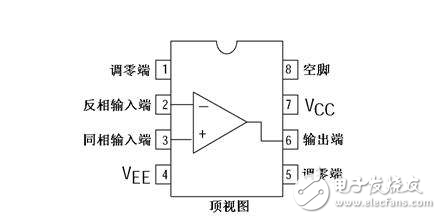
Privacy statement: Your privacy is very important to Us. Our company promises not to disclose your personal information to any external company with out your explicit permission.
Select Language
In integrated op amp applications, phase-compensated integrated optics are sufficient for most applications. However, when applied, sometimes self-excitation occurs, which is generally caused by the following reasons. 
1. The phase correction circuit and parameter values recommended in the instructions for use of the integrated operational amplifier are not corrected.
1 The compensation methods and parameters recommended in the manual are obtained through product design and a large number of experiments. They are effective for most applications. They take into account changes in frequency response characteristics caused by factors such as temperature and power supply voltage variation, and are guaranteed to have certain Stability margin.Second, the power supply decoupling is not good
2 When the power supply decoupling is not good, the voltage drop on the internal resistance of the signal current of each amplifier stage will produce mutual coupling. If the coupled signal is in phase with a certain stage input signal, the circuit will generate parasitic oscillation. To this end, power supply decoupling must be emphasized. When decoupling, in addition to adding a large capacitor at the power supply end, it should also be connected to a small capacitor of the ceramic chip. Because of the large capacitance such as electrolytic capacitor, its distributed inductance is large, which affects the decoupling effect.Third, the influence of distributed capacitance when the circuit is connected
3 Due to the distributed capacitance of the circuit, sometimes the signal of the latter stage is fed back to the previous stage through the distributed capacitance. When the feedback signal is in phase with the original input signal of the amplification stage, parasitic positive feedback is also formed, thereby causing the circuit to self-oscillate. Therefore, it is important to minimize the distributed capacitance when connecting the circuit. In particular, care should be taken to keep the "+" input end of the integrated op amp away from its output.Fourth, the impact of the overload of the integrated op amp load capacitance
4When the load capacitance of the integrated operational amplifier is too large, the open-loop frequency response curve of the entire operational amplifier circuit will change, which will reduce the phase margin of the circuit and even cause self-excitation. If a small resistor (such as within a few hundred ohms) is added to the output of the op amp and the external load capacitor to isolate the op amp circuit from the load capacitor, the effect of the load capacitance can be reduced. But sometimes the effect of this improvement is limited. To eliminate self-oscillation, reduce the load capacitance or add an output stage circuit with a higher output power and better high-frequency response at the output of the integrated op amp.
5. The grounding resistance of the integrated op amp's non-inverting input is too large.
5 When the non-inverting terminal is connected to a large resistor, it forms a new pole with the capacitance of the differential mode input terminal. Although the capacitance of the input terminal is not large, the external resistor of the non-inverting terminal is large, and the newly generated pole is generated. It may be close to or below the handover frequency, making the closed-loop circuit self-excited or the circuit dynamics worse. The easy way to solve this problem is to connect the capacitors on the non-inverting-to-ground resistor to form a high-frequency bypass.6. Parasitic capacitance exists between the output of the integrated operational amplifier and the non-inverting terminal and the zeroing terminal.
6 When designing a printed circuit board, or when doing circuit experiments, the arrangement of the leads is not appropriate or too long or too close, which will cause parasitic capacitance and cause self-excitation. Usually in low-frequency circuits, self-excitation is less likely to occur, and in wideband amplifiers, care should be taken to eliminate parasitic capacitive coupling.E-mel kepada pembekal ini

Privacy statement: Your privacy is very important to Us. Our company promises not to disclose your personal information to any external company with out your explicit permission.

Fill in more information so that we can get in touch with you faster
Privacy statement: Your privacy is very important to Us. Our company promises not to disclose your personal information to any external company with out your explicit permission.